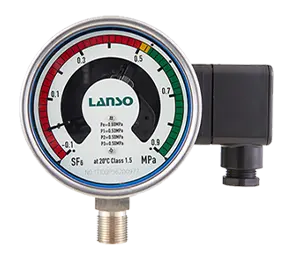SF6 relay has different operating principles and zero issues in terms of working and non-working states. When SF6 relay is installed and working on a device filled with SF6 gas, it is in an isochoric working state. In this state, the density relay measures the pressure of SF6 gas in the gas chamber of the device, and this pressure fluctuates with the changes in gas temperature.
Working state of the SF6 relay
In the working state, the density relay indicates the gas density by measuring the pressure of SF6 gas in the system. The temperature compensation element compensates according to the ambient temperature variations to ensure that the instrument's reading is related to gas density and not related to gas pressure variations due to temperature. In this state, the density relay can stably provide accurate density (or pressure) readings.
Non-working state of the SF6 relay
However, when the SF6 relay is in a non-working state (when not inflated), it measures atmospheric pressure, and is no longer influenced by SF6 gas. In this case, the role of the temperature compensation element causes the pointer to deviate from zero. When the ambient temperature is higher than the base compensation temperature (20℃), the pointer of the density relay points below zero. When the ambient temperature is lower than the base compensation temperature, the pointer points above zero. The specific deviation is related to the temperature variation.
Working principle of the SF6 relay
The basic working principle of the SF6 relay is to express using the density of SF6 gas and works under rated pressure. Through the internal temperature compensation unit, the relay measures SF6 gas pressure while automatically compensating for the effect of temperature changes on the readings, ensuring that the readings remain constant under different temperature conditions. If there is an SF6 gas leak, the relay outputs an alarm signal requiring the user to fill the gas. If the pressure continues to drop, the relay outputs a lockout signal, allowing for safe operation protection of electrical equipment.
The SF6 relay presents unique operating principles and zero issues under working and non-working states. Understanding these differences, and carrying out regular maintenance and calibration, is key to ensuring the normal operation of the SF6 relay and securing the safety and stability of the power system. By correctly dealing with zero issues, we can better leverage the advantages of the SF6 relay, ensuring that it provides accurate and reliable readings under various environmental conditions, thus providing robust support for the sustainable operation of the power system.







